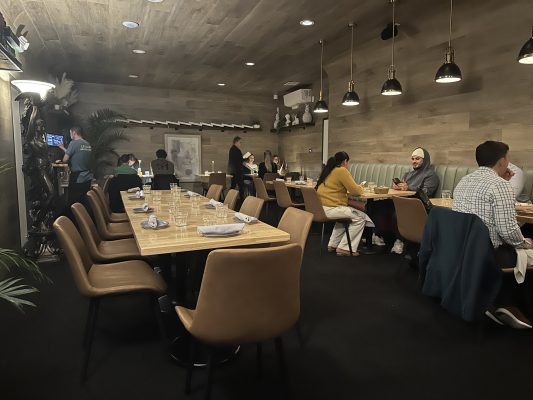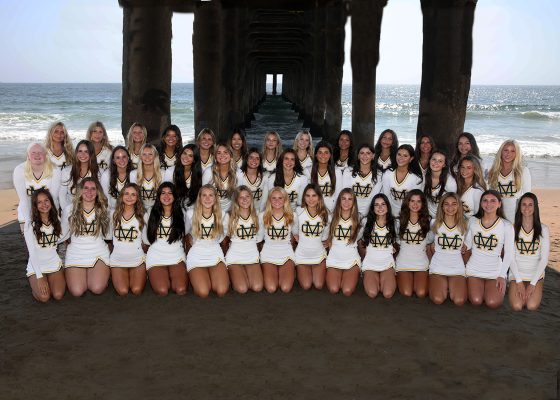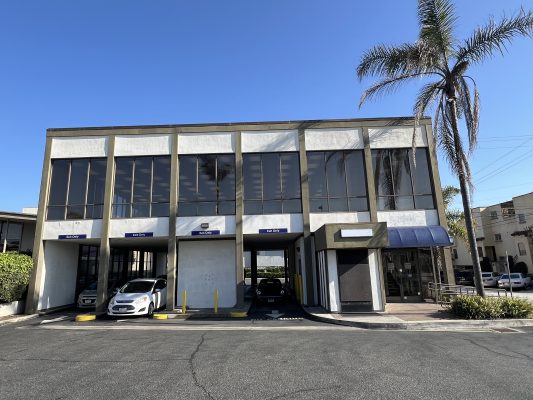
The stairs his father built so his mother, who contracted polio while working as a nurse, could walk up more easily.
The single shower that he shared with his parents and sister.
The magnolia tree, a gift to his father from the PTA, that grew from a sapling to a two-story tree.
The house at 320 35th Street holds a lot of memories for Gary Sweeney.
It was where his parents brought him home from the hospital in 1952 and where he lived until he went off to college.
But now that his parents are gone, he’s decided to let go of the almost century-old house, which he says is in constant need of repair.
He’s sold it to a developer who will tear it down and build a three-story building with two condos on the 30- by 90-foot lot.
“I’ve already apologized to all the neighbors,” said Gary, some of whom he’s known since childhood. “Trust me, I’m very conflicted about this. It’s very bittersweet.”
But in the meantime, Sweeney, an artist, has rented the house from its new owner to pay tribute to his father and the house with an installation that will be up through February.

The old Manhattan Beach
These days, if you asked someone in Manhattan Beach who Mike Sweeney was, they probably wouldn’t know.
But there was a time when everyone knew the former mayor and hardware store owner who passed away in 2000.
“When we explained where we lived to someone, we’d say, ‘We live next door to Mike,’” recalled his longtime neighbors Dixie and Jim Dawson. “People still come by and ask, ‘How’s Mike? He still alive?’”
Mike’s mother drove the family from Oklahoma to California during the Dust Bowl, Gary said. Mike worked for 25 years as a detective in the Harbor Division of the Los Angeles Police Department in San Pedro. His experience taking photos of crime scene victims led him to take photos of his family, which he developed in the dark room he built as an addition to the house.
“He was not an amateur, but a professional hobbyist,” said Gary.
After leaving the force, he opened Sweeney’s Hardware at Highland and Rosecrans avenues. It was a local gathering place, where people would come to buy nuts and bolts or to shoot the breeze with its owner.
Mike sat on the board of many local organizations: the PTA, the school board and the city council, among others.
He was involved with the development of the Chevron tank farm, on which the Manhattan Village Mall, Marriott hotel, golf course and Manhattan Village Senior Villas now sit, during his three terms on the city council in the seventies and eighties.
He spearheaded the development of Sand Dune Park, according to Gary.
At Christmas, he loved to dress up as Santa, going around town on his sleigh, the Dawsons said.
“As our kids got older, they said, ‘Santa sounds like Mike Sweeney,’” said Dixie Dawson.

In 1945, Gary’s mother Anita bought the house on 35th Street for $5,400 while Mike was in Guam with the Navy.
“’We just didn’t know how we were going to afford it,’” Gary recalled his mother telling him. His father made $75 a month as a policeman.
At that time, The Strand was seen as an undesirable place to live, Gary said his father had told him.
“There used to be a lot of empty lots on The Strand,” said Gary. “My wife asked my dad, ‘Why didn’t you buy a house on The Strand? We’d be sitting pretty right now.’”
His father responded, “’Nobody wanted to live there.’”
“It was really sandy,” said Gary. “They really didn’t want to live there during World War II. They thought it would be ground zero for an invasion by the Japanese. The poor people lived on The Strand.”
“The Beach Cities was a unique place to grow up,” Gary said. “The fifties, sixties and seventies were pretty carefree. We were all pretty lucky who grew up here.”
Gary recalled walking or riding a bike to Grandview Elementary, not far from his house. He also attended Center School and Mira Costa High School.
“We’d go to the beach by ourselves. We played in the street. It’s hard to imagine a lot of that stuff.”
Gary recalled frequent bad car crashes. There were no stop signs in his neighborhood and
Highland Avenue was already a commercial area.
“Sloopy’s was a little place called the Plush Donkey,” said Gary. “Moon’s Market was there and there was a soda fountain next to it.”
He remembered busy Friday and Saturday nights at the clubs and bars like Cisco’s.
“It was like the Sunset Strip,” he said.

In 1992, Gary received one of his first public art commissions from the city. By the scout house near Live Oak Park, he affixed a photo of himself as a scout and a poem about turning 40-years-old, as he just had at the time.
Even three decades ago, Mike knew his house would probably be torn down one day, Gary said.
“That’s what they were doing 30 years ago,” said Gary. “It went from middle class to upper middle class to upper one percent. Back then people were scraping old houses.”
The Sweeney house was a small beach cottage before his father built the additions and added a second story.
When Mike passed away in 2000, he left the house to his son and daughter Gail. Gary bought out his sister’s share some years back. He said that while he enjoys coming back to visit, Manhattan Beach isn’t the same.
“The parking around here is unbelievable,” he said. “And the traffic. I still love this place. But I live in a pretty big house in Texas. I have a studio and a pool. I don’t have the ocean. Your tastes change as you get older.”

The old house, built in 1922, required constant maintenance, he said. It needed a new roof, among other things. So in July or August, he decided to put it on the market. It sold the same day.
“It took me by surprise,” he said. “That was when a mini panic set in. It really hit me: It’s no longer mine.”
He quickly came up with the idea of installing old family photos taken by his father on the outside of the house.
“I always wanted to honor his photos,” he said. “I wanted to honor my father. What better way than through his photos?”
He had them blown up and printed on slabs of wood in Texas. The second week of January, after the last tenants had moved out, he drove over in a big white truck and began putting up the boards with the help of a grad student.
Having built public art installations before prepared him for the project.
“It’s working on a scale within my comfort zone,” he said.
The theme is also familiar. For one of his most well known pieces, an installation at the Denver International Airport called “America, Why I Love Her,” he drove around the country for two years, taking photos of quirky, local attractions.
“I’ve been using nostalgia in my art forever,” he said. “People can relate to that family vacation stuff — driving around in a station wagon in the fifties and sixties.”

For this project, he said, “I don’t want to highlight my family as much as trigger memories. My family wasn’t unique. We were ridiculously typical: Two kids, a dog. I played Little League, which was what everyone did.”
He didn’t decide how to arrange the photos ahead of time.
“It’s like a jigsaw puzzle for us,” said Gary.
Late Monday morning, on January 11, Gary and his assistant had already put up about a dozen photos on the front of the house. Others were leaning against the wooden walls inside or scattered around the back patio where his mother used to grow orchids in a glass house. A strip of a photo that had been shaved off lay on the ground. A sign with a black and white photo of the house reading, “The Sweeney House, February 1946,” was planted in the ground in front of the magnolia tree, which has begun to wither.
“It’s like it knew its time had come,” Gary mused.
Several people walking by stopped to look at the house or say hello.
“That’s one of the nicest things I’ve seen in Manhattan Beach when a house changes,” said one woman.
On January 30, Gary plans a launch party for the project, which will be up through the month of February.
“Every time a house like this disappears, it’s always an end of an era,” he said. “I needed to do something to give it a proper farewell.” B











